1 The West Antarctic ice sheet enters irreversible decline
13 January
In January and May we heard news of the “irreversible decline” of the West Antarctic ice sheet. Stark headlines reported three studies of huge glaciers flowing into the Amundsen Sea that, if right, could mean a considerable sea-level rise over the next few hundred years. Interestingly, it isn’t a simple story of “humans cause global warming, ice melts”. While that’s true in some parts of Antarctica and Greenland, changes in the Amundsen Sea were triggered by water that’s already warm circulating under the ice. The jury’s still out as to whether human activities influenced this circulation in the past. But there’s reason to think we might make this and other triggers more likely in future. The big questions are: how long will this decline continue, how fast will it happen, and could it begin in other parts of Antarctica? I’m researching this fascinating story right now, so watch this space…
Dr Tamsin Edwards, environmental scientist, the Open University
2 Science discovers that dogs recognise their master’s voice
21 February
Functional imaging techniques such as fMRI allowed us to ask many questions about the functions of healthy human brains. A study this year really raised the bar by looking at brain function in humans and in domestic dogs. Both species showed activity in the superior temporal sulcus when they listened to emotional sounds (from both humans and dogs), though both showed a greater brain response to their own species. Dogs are highly social, and humans have been argued to have selected for particularly relevant cognitive skills in our co-evolution with dogs – dogs are capable of learning to understand many spoken words and are one of the few animals to understand what pointing means. This, the first inter-species fMRI study, opens up a way of looking at these shared skills from a brain perspective. And it was made possible by training the dogs to lie still in the scanner, a necessity which may make the first human-cat study some way off.
Sophie Scott, professor of cognitive neuroscience, UCL
3 The discovery of gravitational waves (or not)
17 March

My science story of the year was the announcement by a team of cosmologists in March that they had detected ripples in space left over from the birth of the universe.
The results came from an experiment carried out at the South Pole called BICEP2, which detects weak microwave radiation from space using highly sensitive telescopes. I went on record saying I thought the discovery was worthy of two Nobel prizes: one for finding evidence of gravitational waves from the Big Bang and another for providing indirect evidence that our universe is not the only one, but is part of a “multiverse”.
Unfortunately, the excitement didn’t last long. As part of their analysis, the researchers had used preliminary data taking into account space dust floating around the galaxy. By late May, a more careful reanalysis by scientists at Princeton concluded that the result had underestimated the effect of this dust, calling the whole discovery into question. Oh well, that’s science.
Jim Al-Khalili, professor of physics, University of Surrey
4 Antibiotic resistance wins the £10m Longitude prize
25 June

Three hundred years after the Longitude prize was first launched and a watchmaker named John Harrison revolutionised navigation at sea with the chronometer, the Longitude committee was reinstated and the public called upon to have their say on which of six challenges should be chosen for 2014’s £10m prize.
I championed antibiotic resistance, which threatens a cornerstone of modern medicine, and am thrilled that it was chosen. The Longitude prize has not only allowed us all to play a part in shaping the future by deciding how science can be used to mitigate a global problem, but it is also spurring on the innovation and collaboration needed to further existing technologies so that a cheap, fast and easy to use point-of-care diagnostic test can be developed that correctly identifies bacterial infections.
Thousands of individuals and organisations have already put forward their solutions. And perhaps, once again, the answer will come from a surprising and unexpected source.
Liz Bonnin, TV presenter, Bang Goes the Theory
5 The launch of the Orbiting Carbon Observatory
2 July
I spent the afternoon of 2 July pretending to work while really being distracted by Nasa TV. In the dark and fog in California, a rocket was preparing to launch. The payload was the Orbiting Carbon Observatory, a satellite capable of making detailed carbon dioxide measurements from space. But this was Mark II, because the first version never got to orbit. In 2009, a “launch vehicle anomaly” had scuppered the first satellite designed to watch our planet breathe, and it burned up on re-entry before making a single measurement. The wait has been really frustrating. But this time everything went to plan, and OCO-2 is up above us now. The satellite will scan our planet in low-earth orbit, monitoring CO2 concentrations using spectrometers and reflected sunlight. We’ll be able to see where and when CO2 comes and goes with the seasons, mostly naturally but also with the help of humanity. In 2015, we’ll finally be able to watch our planet breathe.
Dr Helen Czerski, physicist and oceanographer, UCL
6 The octopus who sat on her eggs for four years
30 July
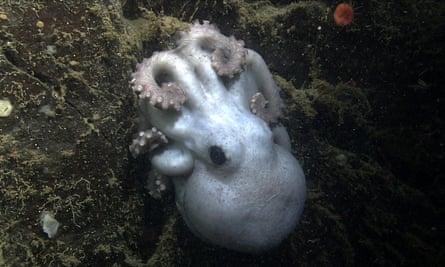
Can you imagine sitting still, in the dark and cold more than a kilometre beneath the ocean surface for 53 months? No, nor can I. But the story about the octopus mother who sheltered her eggs for more than four years described exactly that situation. There was even doubt that she had eaten during that time. That story obviously could be taken in an emotional way – the doting mother who gives up her all for the sake of her children-to-be (death after the eggs hatch seems to be the norm for these species). But there are also interesting scientific questions: does such a long gestation produce offspring better able to survive? What metabolic processes enable such a long, motionless, foodless existence for the mother? Or was this just a freak longevity that happened to be observed, rather than a typical gestation?
Athene Donald, professor of experimental physics at the University of Cambridge and master of Churchill College
7 Professor John O’Keefe wins the Nobel prize in physiology or medicine
6 October
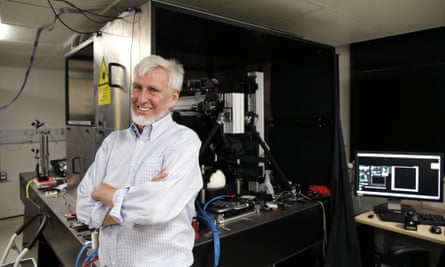
My science moment of the year was hearing that Professor John O’Keefe from UCL, along with Professors May-Britt and Edvard Moser from the Kavli Institute in Norway, had been awarded the Nobel in physiology or medicine for the discovery of a navigation system in part of the brain called the hippocampus. Their research revealed the neural mechanisms of how we remember routes and places, and it paved the way for an entire field of neuroscience dedicated to spatial memory and navigation. This was a great moment for British neuroscience, as much of the research was carried out in the UK. It was also a reminder that science is an international endeavour: O’Keefe is American and many of the brilliant researchers who have trained in his London-based lab are from other countries, underlining the value of enabling people from all over the world to come to the UK for scientific training.
Professor Sarah-Jayne Blakemore, UCL Institute of Cognitive Neuroscience
8 The Virgin Galactic crash
31 October
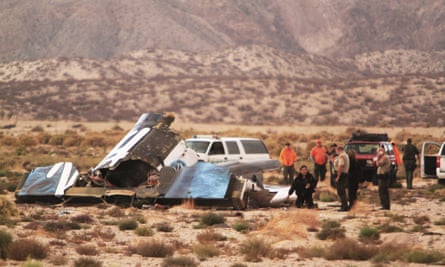
When in 2009 Virgin Galactic announced that it would be taking orders for its first commercial space flights I was one of many to rush to buy a ticket. Five years later the ticket price of $250,000 is still beyond my means, but I don’t begrudge those rich enough to sign up. Space is a new frontier and if I’m ever going to have a chance to go, then engineers proving that it is possible have to be funded somehow. So I felt huge disappointment, and sympathy for the family of the pilot, when the Virgin Galactic SpaceShipTwo blew up on a test flight on 31 October. Up until this point this new space ship design had been making steady but slow progress towards full operation. The root cause of the crash is not yet known, but as a result of this setback the chances of commercial space flight this decade have receded significantly.
Mark Miodownik, professor of materials and society, UCL
9 Monica Grady’s reaction to the Philae landing
13 November
It wasn’t the astonishing shots from Philae landing on Comet 67P, it was the cameras pointing the other way. As the message of touchdown beamed into the Rosetta mission control, the Open University’s brilliant professor of planetary sciences, Monica Grady, was leaping around like – well like what? Not a footballer scoring a goal, because she was without ego or histrionics. No, Monica Grady was bouncing and yelling like a scientist. There are very few moments in a scientist’s career when something truly extraordinary comes to fruition after decades of work – most of us will never experience it. But thanks to a project that seized the public imagination and showcased humankind’s terrific ability to reach beyond our grasp, we all got to share in the purest joy of success.
Monica describes herself as “short, round, bespectacled, busy and bossy”. I’d like to add to that “joyous”. May the stereotype of old haywire men with unkempt hair be banished for ever. Scientists are just people, but this is what discovery feels like.
Dr Adam Rutherford, presenter, Inside Science, Radio 4
10 Trinil shell
3 December
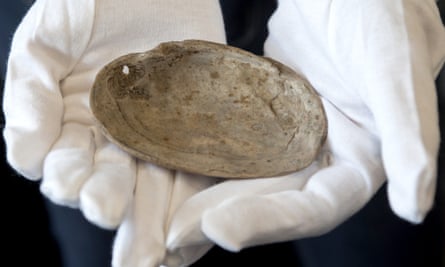
Earlier this month, publication of a study in Nature sent shock waves through the science of human origins. The report included a description of one find in particular that pulls off that trick – so common in palaeontology and archaeology – of carrying huge import while looking quite fantastically unremarkable. But when I looked at the photo of the half-a-million-year-old shell from Indonesia I was excited beyond words. This was just a mussel shell – but with an incised, zigzag pattern. Made not by modern humans, nor by Neanderthals, but etched by some earlier species – probably Homo erectus. Archaeologists and anthropologists have agreed that creating geometric patterns is “modern behaviour”. Before this shell, the earliest geometric pattern we knew of was on a piece of ochre from Blombos Cave in South Africa, dating to around 75,000 years ago – comfortably within the time-frame of Homo sapiens. But what this shell means is that the “modern mind” is much more ancient than we’d ever imagined.
Alice Roberts, professor of public engagement, University of Birmingham
11 The Orion test flight returns to Earth
5 December
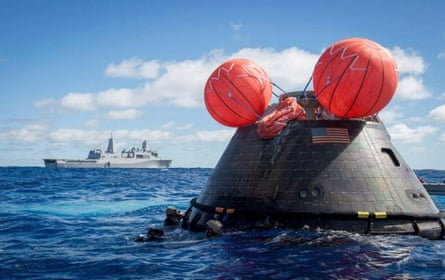
The Orion capsule’s successful splashdown in the Pacific Ocean a few hundred miles west of Baja, California, did it for me this year. Redolent of the days of Apollo, it represents the first tangible hardware that might carry us once more outside the confines of low Earth orbit. Orion is a vehicle set to become the foundation of the state of the art in Nasa’s programme of human exploration, with space station, the moon, Mars and destinations beyond in its potential repertoire. Human space flight is hard. We wrap bubbles of artificial life support inside capsules and mount them on the top of launchers with terrifying explosive capacity. We do that in the hope that neither the vehicle nor her crew are destroyed in the process. Making systems like that work with reliability you’d be willing to bet your life on is no easy task. December’s test flight saw an unmanned Orion capsule flung into a high elliptical orbit, travelling further from Earth and faster than any human-rated vehicle in more than 40 years. There’s plenty more mileage that needs to be covered yet before we can achieve our wider interplanetary goals but that splashdown was, for me, one of human spaceflight’s all important small steps.
Dr Kevin Fong, associate director, Centre for Altitude, Space and Extreme Environment Medicine, UCL
12 Solar panels approach 40% efficiency
8 December

Amid all the economic gloom and the mixed news about climate change, 2014 has marked the exciting moment when the price of clean, low-carbon solar electricity approached that of oil, gas, and nuclear without subsidy. Thin-layer semiconductors, materials that conduct electricity poorly in the dark but allow electrons to flow freely when the sun shines, lie at the heart of this technology. Though silicon dominates the market, chemists are making huge progress. Cells based on cadmium telluride, a much less energy-demanding material than silicon, and lead-halide perovskite, a revolutionary substance only discovered in 2009, have both reached efficiencies around 16-17% this year, threatening to knock silicon off its perch. And other more complex systems are pushing past 40%. But even without these developments, the price for silicon cells has dropped so dramatically that you can even buy panels at Ikea. Spread the word. Green electricity is here to stay.
Andrea Sella, professor of materials and inorganic chemistry, UCL
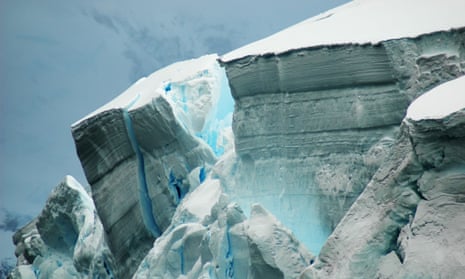
Comments (…)
Sign in or create your Guardian account to join the discussion